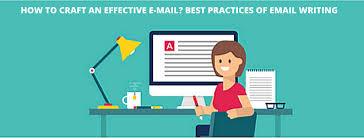In today’s digital age, emails are ubiquitous for communication. It serves as a medium that connects people from different parts of the world, and can be used for anything from transferring files to networking and marketing. Writing an effective informational email takes a certain amount of effort and skill, as it is not as simple as typing out a message and hitting send. To ensure maximum impact, the following tips and tricks can be followed:
Structuring the Email
Structure is key in making sure that the recipient will read the email in its entirety. This means that the information should be presented in a way that makes it easy for the reader to go through. To achieve a good structure, consider the following:
Use HTML Headings and Subheadings
Using HTML headings and subheadings aid in structuring the email. The H1 header should be used at the beginning of the email to introduce the topic, while the H2 header should be used for the main message. Relevant subheadings can be used for additional information. This not only makes the email more readable, but it also signals to search engines like Google that the email contains valuable information.
Use Short Paragraphs
Long blocks of text can be difficult to read and may cause the reader to lose interest. It is better to use short paragraphs that are easy to read, each one focused on a single idea or piece of information. A paragraph should contain no more than five sentences.
Use Bullet Points
Bullet points can be used to break down important information and draw attention to key points. This makes it easier for the reader to scan the email and get the main points.
Writing Style
An effective email is not just about the structure, but also about the style of writing. The following points should be taken into consideration:
- Be Mindful of Tone
The tone of the email should be professional, yet conversational. It should be tailored to suit the recipient and their relationship with the sender. The language should be clear and concise to avoid being misinterpreted.
Use Personal Pronouns
Using personal pronouns such as “you” and “we” can add to the conversational tone of the email. It can also make the email more relatable and easier to understand.
Keep It Simple
Using technical jargon or complex vocabulary can make the email harder to read and understand. The tone should be simple and easy to understand, with relevant information presented in an accessible manner.
Use the Active Voice
Using active verbs can make the email more engaging and easier to read. It makes the message clear and helps to avoid ambiguity. Messages written in passive voice use longer sentences and can appear more formal and less personal.
Use Rhetorical Questions
Rhetorical questions can be used to draw the attention of the reader and make them more involved in the email. It can also help to frame the message in a way that is meaningful to the reader.
Incorporate Analogies and Metaphors
Analogies and metaphors can be used to explain complex ideas in simple terms. They make the email more interesting and memorable, making it more likely that the recipient will read and assimilate the information.
Content
The content of an email should be relevant and interesting to the recipient. The following points should be taken into consideration:
Be Concise
The message should be clear and concise. Unnecessary details should be avoided to maintain the reader’s interest.
Provide Context
The intended audience and the context should be considered when drafting the email. The message should be tailored to suit their needs and interests.
Address Pain Points
The email should address the recipient’s needs and concerns. It can provide solutions to problems that they may be facing or give advice to improve their situation.
Add Value
Adding value means providing the recipient with valuable information, such as industry updates, useful tips, or relevant resources. This keeps the recipient engaged and motivated to read future emails.
Use Call to Action
A clear call to action should be included to get the recipient to take action. This can be something as simple as responding to the email or clicking a link.
In conclusion, adhering to these best practices can make the difference between a successful and an unsuccessful email. It is important to structure the email, ensure a clear and accessible writing style, and provide relevant and engaging content. Email is a powerful communication tool when used effectively, and by following these tips and tricks, you can maximize your impact and achieve your goals.
FAQs:
While it is not necessary, it is highly recommended as it makes the email more readable and signals search engines that the email contains valuable information.
It makes the email more relatable and easier to understand, thereby improving the chances that the recipient will read and assimilate the information.
It is not advisable as it can make the email harder to read and understand. The language used should be clear and concise.
It is very important as it shows that the sender is aware of the recipient’s problems and has solutions to offer.
Yes, as it gets the recipient to take action and helps achieve the sender’s goals.


